Update Three: Writing with the James Bay Cree: Ruth DyckFehderau
Ruth DyckFehderau - 22 June 2023
For several years now, I’ve been writing nonfiction books with the James Bay Cree of Northern Québec. Currently we’re working on a book series of Indian residential school recovery stories. (My Cree supervisors hire outsiders for trauma stories partly because “our own [writers] have enough to carry.”) This posting has been approved by my supervisors at Cree Board of Health and Social Services of James Bay who publish, own, and control the books.
Last year, I told a few stories from a trip North here and, the year before that, I posted a description of our previous books here. This time, I’ll tell you about some challenges that come with writing about the residential school genocide, and about the recent launch(es) of the first book in a new series, E nâtamukw miyeyimuwin: Residential School Recovery Stories of the James Bay Cree, Vol. 1. More information about the book here.
Many residential school stories, including stories in this book, tell scenes of torture and starvation, making for some unusual challenges in craft. Even though most storytellers tell of recovery, and the book itself is full of humour and triumph, it still contains a good deal of material that’s heavy and bleak. And the page, my students will recall me saying, can only bear so much weight, so much sorrow, before readers give up.
In our previous book project, we had used funny short vignettes to introduce levity and context. In this book, we did that again. Here’s an example:
A seaplane landed in a coastal community at high tide one day and the pilot went in to the community for some days off. A few hours later, another community radioed: someone needed an urgent med-evac. The pilot ran out to his plane on the shore – but by then the tide had gone out. Way out. The plane sat on dry land. A Cree person saw the problem, hollered out, and a crowd quickly gathered. The pilot climbed into his plane, the people organized themselves around the pontoons, they picked up the plane, and they carried it out to sea where it took off and transported the patient to hospital.
But, even with vignettes sandwiched between stories, the book needed still more light. I was trying to think my way though this matter when, on my semi-annual story-gathering trip in Eeyou Istchee, an Elder pulled me aside. “This book we’re making,” he said. “Find a way to bring in the next generations so that they take these stories as their own.” (I recalled then that, years earlier, an Edmonton Métis writer had said something similar…)
My Cree supervisors and I decided to address these two requirements – for light and for next generation participation – together. First, we had two Cree children write out the alphabet several times and, from these alphabets, we built a font to use for story titles. Here’s an example from our press kit.
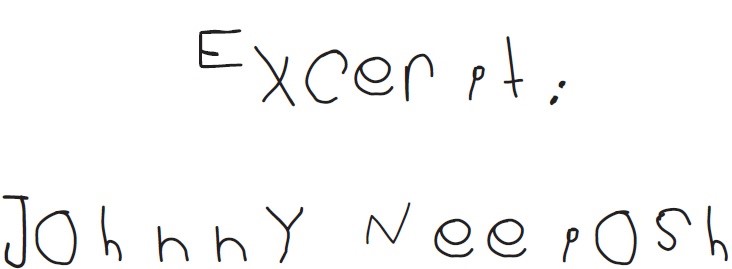
And second, we asked a Cree child or youth artist to illustrate each story in the book. We didn’t want the children to read about trauma, though, so we chose a nonviolent scene from each story and asked the artist to illustrate the scene.
Here are some examples:
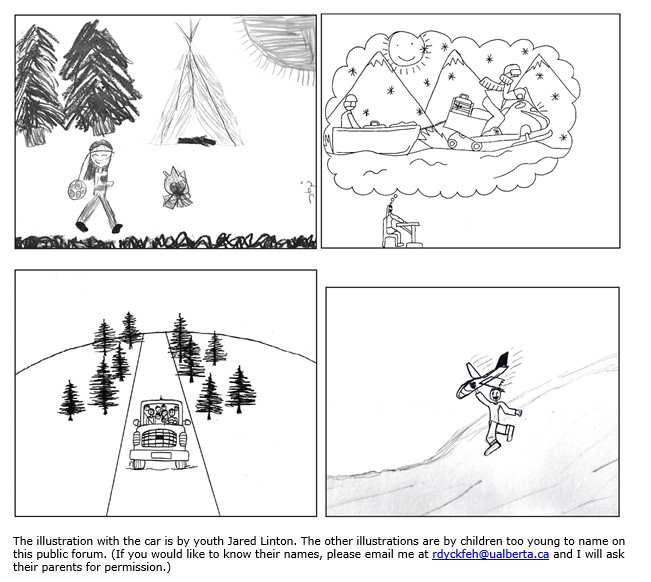
Three months ago, in March, we finally launched the book.
The first launch took place in the stunning Great Hall of the National Gallery of Canada (Ottawa) facing the buildings where Indian Residential School decisions had been made. We were welcomed by the Algonquins of Barriére Lake on whose land the Gallery sits. After a tobacco exchange followed by smudging, the Algonquin drummer and the Cree drummer each sang the honour song of their Nation. Then came speeches and a story reading by Cree audiobook reader (Matthew Iserhoff), while kids ran everywhere and people moved back and forth to the tea-and-bannock table. What had started out as a one-hour event stretched to three intense hours.
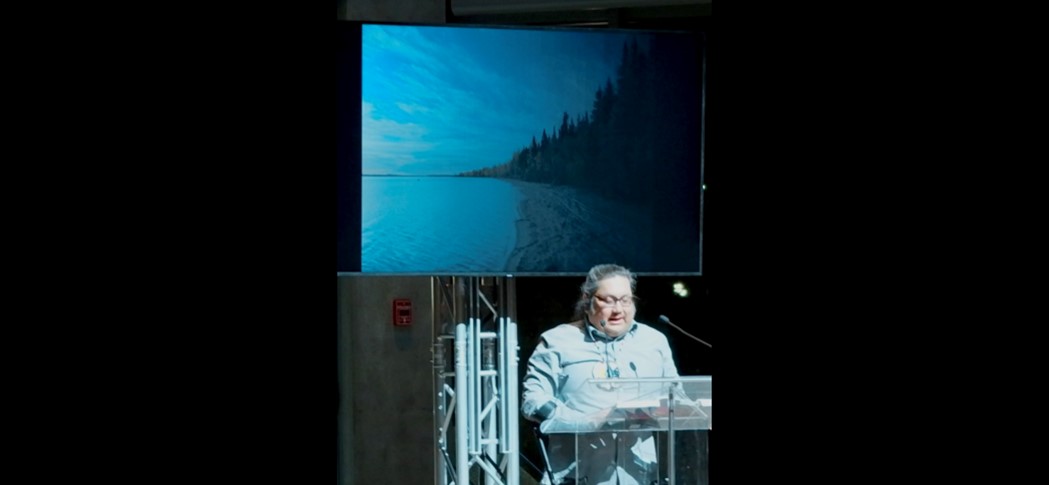
Photo of Cree reader Matthew Iserhoff. Taken by Manikarnika Kanjilal and used with permission.
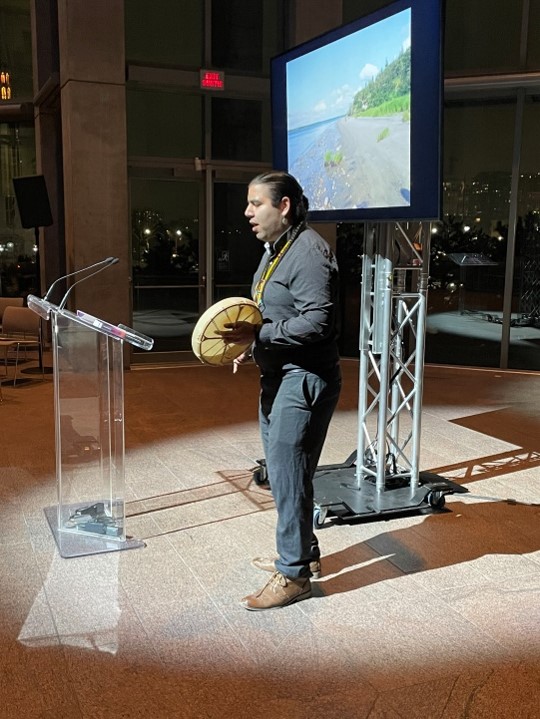
Photo of Algonquin drummer Awema Tendesi. Taken by Ruth DyckFehderau and used with permission.
A few days later, we all drove North again to the town of Oujé-Bougoumou for a second launch in the even-more-stunning Aanischaaukamikw Cree Cultural Institute and we did it all again.
This second launch was more intimate and took place mostly in the Cree language.
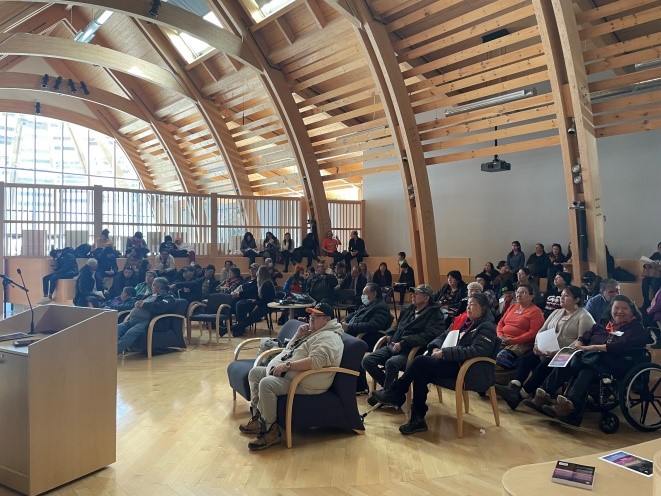
People beginning to gather. Photo credit Ruth DyckFehderau. Used with permission.
Two of many highlights include JBNQA principal negotiator and signatory (as well as father of Canadian Migratory Birds Act) Philip Awashish tracing the connections between land theft and Indian residential schools, and Elder Johnny Neeposh (and storyteller) encouraging parents to read the stories aloud to their children (torture, rape, starvation, and all), to teach the children about these events in their ancestry, and to “read between the lines” in order to understand the things that the storytellers could not say. Grand Chief Mandy Gull-Masty wrapped the afternoon up.
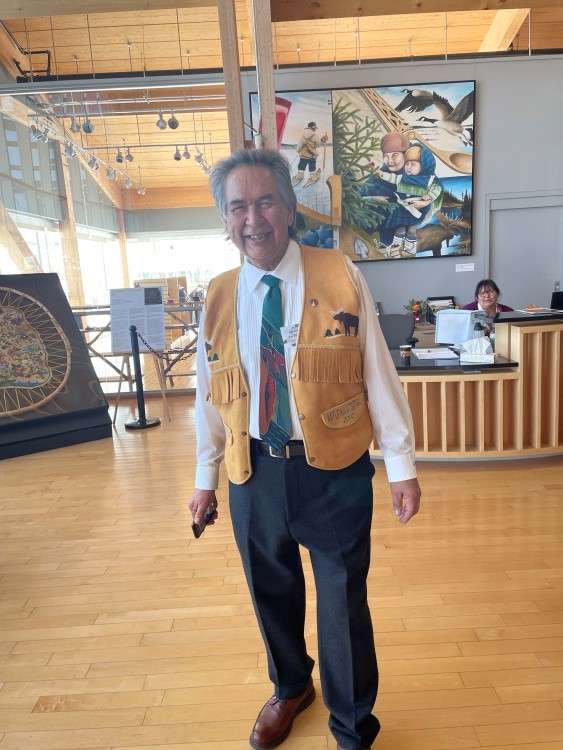
Book project Elder Solomon Awashish (and Emcee of both launches) looking spiffy. Kathy Shecapio, Executive Director of Aanischaaukamikw Cree Cultural Institute in the background. On display in the background is Flora Weistche’s caribou hide beaded artwork “My Grandmother’s Garden.” Photo taken by Ruth DyckFehderau. Used with permission.
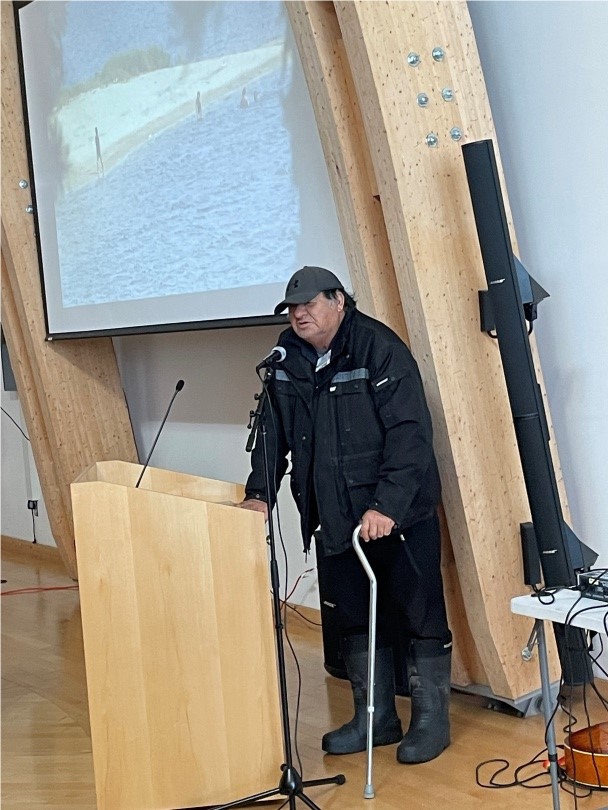
Elder and storyteller Johnny Neeposh. Photo taken by Ruth DyckFehderau and used with permission.
We had thought the event would go from 1 to 4 PM, but we didn’t actually leave the grounds until after 7 PM. Between the two launches, about 300 people attended and we distributed about 500 books.